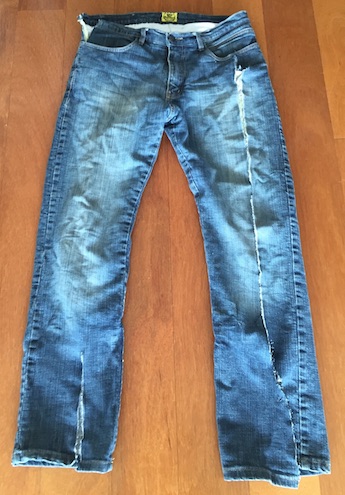The most common injuries in motorcycle crashes are to the riders’ feet or legs, according to leading US public health institute the Center for Disease Control and Prevention (CDC).
If you fall, you immediately put your hands out to protect yourself, yet hands and arms were actually much lower on the scale of injuries than feet or legs which represent 30% of non-fatal injuries.
It’s a good reason why riders should wear decent shoes that don’t slip off in a crash and long pants that have abrasion protection, even if just riding down to the shops.
Boots, not sandshoes
Sandshoes and slip-on boots can easily come off in a crash, even at low speeds. It’s best to wear boots that zip, clip or tie up above the ankle.
Click here to see which are the most trusted boots by riders.
As for pants, most riders think a pair of denim jeans will save their hide. However, denim has a tested abrasion resistance level of 0.5 seconds before it breaks, exposing the skin.
Even if you fall off your bike at 50km/h, you will slide for several seconds, so your denim jeans are useless.
The minimum abrasion protection required for any sort of European certification is four seconds.
Click here for the safety ratings on 10 pairs of rider jeans and click here for leggings safety ratings.

Neck and head injuries
The CDC study found that the next most common location for non-fatal rider injuries was to the neck and head, accounting for 22%, which is why approved helmets are mandatory in most places around the world.
Third most common area for injuries was the chest, back or shoulders, followed by the hands and arms, then the pelvis and hips.
The results come from a CDC study of data for 1,222,000 American riders who went to hospital for treatment of non-fatal injuries from 2001 to 2008.
Victorian Police have previously called for mandatory boots and gloves, but it has been rejected by the Victorian Motorcycle Council and other rider representative groups.
The VMC says they support the use of all protective equipment, but not mandatory riding gear which would require complex certification like with helmets.
They would rather see education and encouragement of riders to wear the appropriate gear or our government taxes and levies being directed toward subsidies for gloves, boots and other safety gear to make them more attractive. Of course, this is just a plus, added to the basics every driver should know: avoid DUI and reckless driving.


